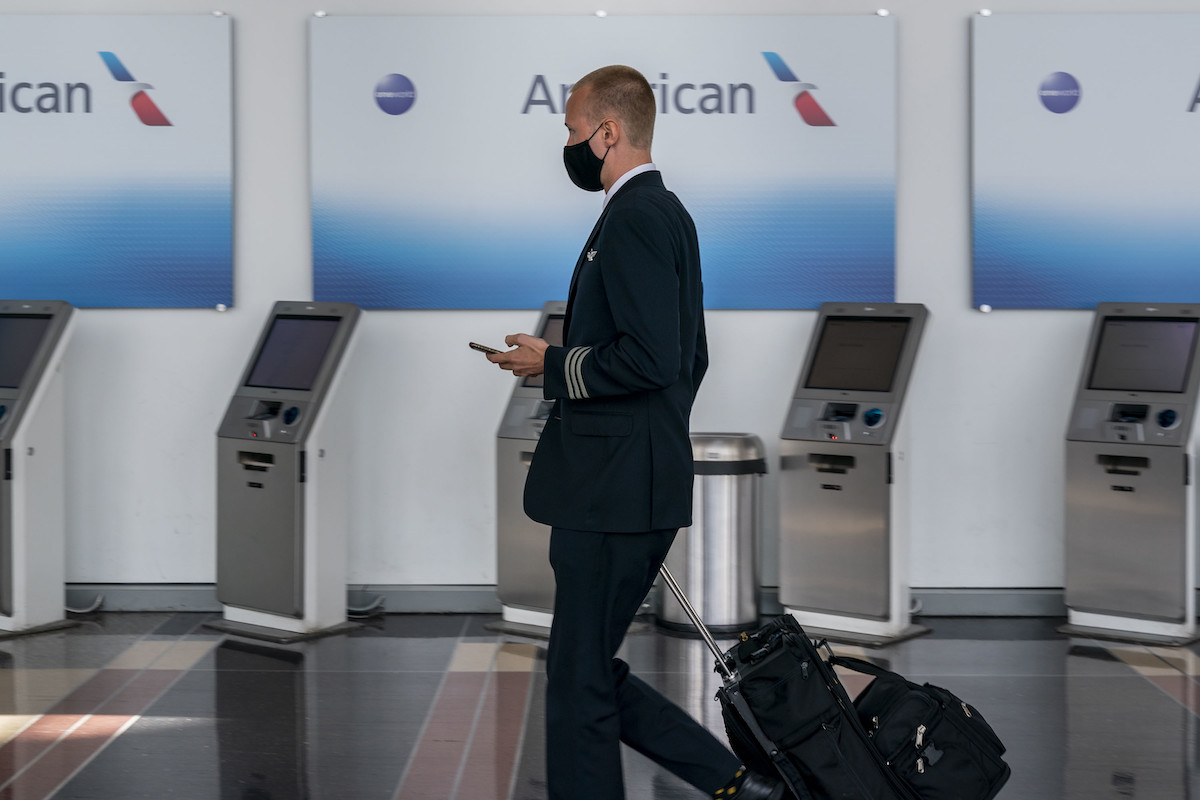American Airlines Pilots Union Moves Towards Possibly Joining ALPA

Photo Credit: Flickr / IMF Photo/Cory Hancock
Some pilots at American Airlines want to leave their union, the Allied Pilots Association, and link up with the largest pilots union, the Air Line Pilots Association. They will present their case to the APA board in June, setting up a potential merger or vote on union representation at the largest U.S. airline.
Since November, a five-pilot committee of the APA, which represents the 15,000 American pilots at American, has explored whether to merge with ALPA, which represents 67,000 pilots at 39 U.S. and Canadian airlines. ALPA's membership includes crew members at American's biggest competitors, Delta Air Lines and United Airlines. That committee recently said that, so far, it has not found any roadblocks to a merger between the two airline pilot unions.
But the fate of any potential union merger remains unclear.
“Preliminarily, we have not found any major concerns that would lead us to recommend against the board doing full due diligence by proceeding to Phase 2," the committee reported to the APA board earlier in April. The board will decide what to do next at a June 1 meeting.
A group of APA members called AA Pilots for ALPA is advocating for a merger. A posting on the group’s website declares: “The pilots of American Airlines need union representation with the resources worthy of the largest airline in the U.S. A merger between APA and ALPA will provide our elected union representatives with the training, tools, and support they need to successfully advocate for our pilots.”
In an email Friday, the group said: “We are encouraged by the recent report by the APA-ALPA merger exploratory committee that stated they are at a unanimous consensus to recommend the APA Board of Directors (BOD) negotiate a merger agreement for BOD and AA pilot consideration by forming the APA-ALPA merger negotiation committee. We believe that a merged APA-ALPA is the preferred way to complete this process.”
At the June meeting, merger advocates will present their case to APA’s 20-member board, which has two members from each of American's 10 pilot domiciles. The board could decide then to begin its own exploration of a merger. Eventually, a merger would require approval of the board, and a vote by APA members.
For the moment, it’s hard to say whether American pilots want to join ALPA. APA contracted with the University of New Hampshire to poll members last September and October. The poll asked: “To what extent do you favor or oppose the APA board of directors exploring a possible merger with ALPA?” Responses came in from 53 percent of American’s pilots. Of those, about 67 percent said they strongly favored or mostly favored exploring a merger, while 33 percent said they were neutral, mostly opposed or strongly opposed to the pursuit. A question is how to interpret the wishes of the 47 percent of pilots who did not vote.
ALPA is a powerful force in Washington, D.C. Its website includes this statement: “ALPA works to ensure that the airline industry remains safe. ALPA represents pilots’ views to decision-makers, including Congress and federal agencies, and ALPA pilot groups have negotiated hundreds of contracts with airlines.” In recent months, ALPA has battled threats to airline safety from cell phone providers and companies that espouse broader use of single-pilot cockpits in commercial aviation.
On some matters ALPA’s message can be tempered because of the wide diversity among the pilot groups it represents. At times, APA has more quickly assessed issues and expressed its views. The comparison between the two unions seems in many ways to be the typical one between a large institutional organization and a smaller one that is more agile but has fewer resources.
ALPA already has a spot at American: It represents about 5,000 pilots at the Fort Worth, Texas-based carrier's three wholly-owned regional carriers, Envoy, Piedmont Airlines, and PSA Airlines.
The exploratory committee issued its report on April 5. The committee said it met with ALPA representatives at separate events in February and March. It also reviewed the pending merger agreement between ALPA and the Air Canada Pilots Association, which has 4,500 members. It concluded that a merger agreement would neither interfere with ongoing contract negotiations nor hinder APA’s ongoing operations or financial position. “Our preliminary impression is that ALPA has the resources necessary to support the representation of the American pilots in many areas, including bargaining, contract administration, legal, communications, air safety, government relations, and strategic planning,” the report said. Phase two would involve a board study of the merger, perhaps leading to a decision to submit a proposed merger agreement to APA membership.
The board should consider a trip to Washington to meet with ALPA representatives for face-to-face meetings, the committee said.
What happens if the APA board declines to pursue a merger? On its website, AA Pilots for ALPA seems to suggest that it could take a more combative approach and seek a union election to replace APA.
“A successful card drive could have disruptive consequences,” the website says. “APA would be dissolved in accordance with its constitution and bylaws. AA pilots would enter ALPA as a newly organized group. Basically we’d be starting from scratch."
And dissolving APA and starting from scratch, the group warns, "would likely involve a lengthy and costly legal process."
